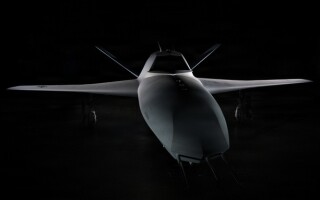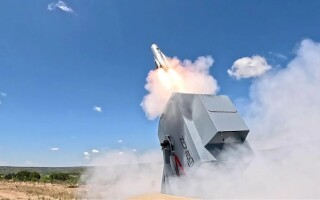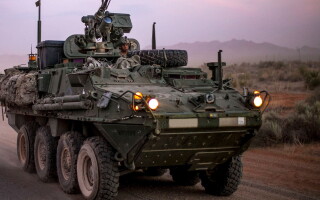GUEST BLOG: Achieving edge AI in space applications
BlogJune 27, 2025

Processing demands in space environments continue to increase exponentially, with more in-orbit applications requiring that image and signal processing as well as networked communications functions be performed at the edge. This reality increases the importance of onboard data analysis, prioritization, and sharing in reliable space-rated systems.
Space-grade electronics have always walked the line between meeting tight budgetary and timeline constraints, while being ruggedized enough to withstand the impact of radiation levels for the intended mission length and orbit level as well as the harsh environment of space itself. When you add in the increased processing demands of today’s in-orbit space systems, sourcing proven, reliable technology that will perform as needed can seem daunting.
Bringing AI into space applications
However, commercial off-the-shelf (COTS) electronics enable aggressive development-to-deployment schedules and provide embedded system designs with enhanced performance that are bringing conceptualized innovations to reality in areas as diverse as launch vehicles, payloads, satellites, and future non-terrestrial habitats. A large push in modern space-rated systems is the incorporation of artificial intelligence (AI).
COTS systems form the basis of the Space Digital Backbone (DBB), an “information highway” approach that provides a unified, flexible, and scalable communication infrastructure to the increasing number of IoT and digital technologies being implemented into space technologies. The Space DBB is a key factor in facilitating edge AI, also known as AI at the edge (AIAE), since it removes the connectivity and computing limitations, as well as the associated performance bottlenecks typically associated with space-grade, radiation-tolerant electronics.
Thanks to its digitized infrastructure, the DBB facilitates edge processing and on-board computing in space-rated systems. Developers can then build platforms that offer more capabilities and functions, such as AI, to enable improved computation and networking as well as increased memory and bandwidth for faster data processing.
Advancing data processing at the edge
Complex AI processing facilitates high density computing via the integration of a GPU and a CPU on the same board to balance workloads more efficiently. While the GPU uses its massive parallel processing infrastructure to offload high intensity computation in a system, the CPU can then utilize its serial architecture to run the rest of the system’s applications. This is the heart of enabling AI in space.
The downlink process that transmits data collected in space to a terrestrial base station, or “compute station,” has traditionally been the preeminent bottleneck in real-time data analysis in space. Subsequent human analysis at the base station can add delays, posing a significant challenge between analyzed data and real-time conditions in space.
With edge AI, data processing happens within the space system itself, so that the information contained in the downlink process has been vetted to include only relevant pieces, thereby freeing up the transmission bandwidth. Onboard preprocessing increases overall data-management efficiency, since the system has already performed a large part of the data analysis needed before it was ever transmitted, not only to the base station, but within orbiting networks and deployed systems themselves.
Examining AI algorithms
Applying the proper algorithm to the correct data and application is where edge AI truly becomes a powerhouse in space-rated systems. Algorithms can be specific to the data provided, whether it is video, signals, or other inputs; they can also be specifically designed for such tasks as addressing anomalies, managing risk, dealing with autonomy vs. human-in-the-loop AI (HITL), and handling proactive and predictive actions.
Different edge AI applications used for on-board decision-making in space can use real-time data, based on anomalies or patterns seen in the system or the payload, to provide actionable data for the satellite or the user. Examples include:
- Image analysis and processing: Converts mass data to meaningful information for real-time analysis.
- Remote sensing and data: Interprets data that provides actionable insight for different applications.
- Predictive communication and signal processing: Enhances signal quality by anticipating signal disruptions.
- Anomaly detection and fault diagnosis: Identifies satellite system faults, plus predicts maintenance or high probability of failure.
- Autonomous operation: Enables debris avoidance or changing conditions – including solar flares – to ensure long-term sustainability.
Use case: NASA’s LOFTID
AI is already proving its value in space innovations. One example is the successful atmospheric reentry mission of NASA’s LOFTID [Low-Earth Orbit Flight Test of an Inflatable Decelerator] in November 2022. LOFTID employed six Aitech S-A1760 Venus AI supercomputers onboard to help control and record the visible and infrared camera images from each of the six camera pods viewing the LOFTID heat shield. (Figure 1.)
.png)
[Figure 1 ǀ The successful launch and re-entry of NASA’s LOFTID in November 2022 demonstrated the first use of AI-based GPGPU technology in space. Photo credit: NASA.]
Continued growth through edge processing
Edge AI continues to present new opportunities for innovation throughout the space industry. COTS-based electronics applied across the Space DBB infrastructure is bringing about cost-effective, space-rated systems that are reducing latency, risk, and cost. The increasing connectivity from these streamlined AI-ready systems is enabling today’s space engineers to build far more efficient and intelligent applications that can be employed throughout a multitude of space missions.
Aitech · https://aitechsystems.com/






